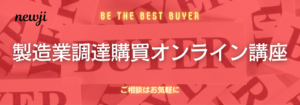- お役立ち記事
- Differences between high-definition printing and regular printing and optimization of color reproducibility

Differences between high-definition printing and regular printing and optimization of color reproducibility

Understanding the nuances between high-definition printing and regular printing is crucial for anyone interested in quality print materials.
These two printing techniques differ in various aspects, from resolution to color accuracy.
Let’s explore these differences and uncover how you can optimize color reproducibility for your printing needs.
目次
What is High-Definition Printing?
High-definition (HD) printing is a technique that enhances print quality by producing sharper, clearer images.
It utilizes advanced technology to achieve a higher resolution compared to regular printing.
This method is typically used for high-quality projects, such as promotional materials, premium packaging, and professional photography prints.
HD printing involves the use of finer inks and more advanced print heads.
These allow for more precise delivery of ink onto a substrate, resulting in vivid colors and detailed images.
Due to its superior quality, HD printing can capture intricate details that regular printing might miss.
Benefits of High-Definition Printing
There are several benefits associated with high-definition printing.
One of the most significant is its ability to produce sharp and vibrant images.
This makes it ideal for projects that require a high level of detail and precision.
Moreover, HD printing offers better color accuracy and wider color gamut.
This means that the printed material will more accurately reflect the original design.
Furthermore, HD printing can enhance durability, as the precise application of ink can create more resistant prints.
What is Regular Printing?
Regular printing is the traditional method used for most everyday printing needs.
It is widely accessible and cost-effective, making it suitable for large-scale production of items like flyers, brochures, and office documents.
This type of printing generally involves the use of standard inks and print heads.
While regular printing can produce satisfactory results, it may not capture the same level of detail and color fidelity as high-definition printing.
Regular printing is highly favored for its affordability and speed.
It is well-suited for bulk printing where high-definition results aren’t necessary.
Benefits of Regular Printing
Despite lacking the advanced technology of HD printing, regular printing offers several advantages.
Chief among these is cost-effectiveness, as it requires less specialized equipment and inks.
For large quantities of prints, this can result in significant savings.
Additionally, regular printing is typically faster than HD printing, allowing for quicker turnaround times.
This makes it an excellent choice for projects with tight deadlines where time is a factor.
Key Differences Between High-Definition and Regular Printing
Several factors distinctly differentiate high-definition and regular printing.
Resolution is a primary factor, as HD printing can achieve a significantly higher resolution than regular printing.
This allows HD printing to create images with fine detail and sharpness unattainable by regular methods.
Color accuracy is another critical difference.
HD printing offers superior color reproduction due to its use of finer and more varied inks.
Regular printing uses standard inks which can lead to a narrower color range and less accurate reproduction of images.
Print durability is another aspect where HD printing often surpasses regular printing.
With precise ink application, HD prints can demonstrate better resistance to fading and wear over time.
Finally, there’s also a difference in cost and production time.
As a premium process, HD printing is generally more expensive and time-consuming than regular printing.
This is due to the advanced technology and higher-quality materials involved.
Optimizing Color Reproducibility
Color reproducibility is vital for ensuring that printed materials match the intended design.
The key to optimizing color reproducibility lies in understanding the interplay between ink, paper, and the printing process.
When working with high-definition printing, it’s essential to use inks and substrates designed for high resolutions and wide color gamuts.
Choosing the right combination can make a significant difference in the final output.
While regular printing may not offer the same level of color accuracy, there are still ways to enhance quality.
Selecting quality inks and suitable paper stock can improve color consistency and vibrancy.
Additionally, using advanced printer settings or professional color management tools can help to bridge the gap between these two printing methods.
This allows regular printing to perform closer to high-definition standards.
Using Calibration Tools
One way to optimize color reproducibility is by using calibration tools.
Printers, monitors, and other related technology should be calibrated to ensure consistent color output.
Calibration helps to match the digital design with what gets printed.
Additionally, working in a color-managed workflow enhances color precision across various devices.
Conclusion
Understanding the differences between high-definition and regular printing is crucial for making informed decisions about your print projects.
High-definition printing offers exceptional quality and color accuracy, ideal for projects demanding the highest standards.
On the other hand, regular printing provides a cost-effective solution for everyday print needs.
Optimizing color reproducibility requires careful selection of materials and settings, regardless of the printing method chosen.
By focusing on these factors, you can ensure that your printed materials meet your expectations and reflect your designs accurately.
 資料ダウンロード
資料ダウンロード
QCD管理受発注クラウド「newji」は、受発注部門で必要なQCD管理全てを備えた、現場特化型兼クラウド型の今世紀最高の受発注管理システムとなります。
 NEWJI DX
NEWJI DX
製造業に特化したデジタルトランスフォーメーション(DX)の実現を目指す請負開発型のコンサルティングサービスです。AI、iPaaS、および先端の技術を駆使して、製造プロセスの効率化、業務効率化、チームワーク強化、コスト削減、品質向上を実現します。このサービスは、製造業の課題を深く理解し、それに対する最適なデジタルソリューションを提供することで、企業が持続的な成長とイノベーションを達成できるようサポートします。
 製造業ニュース解説
製造業ニュース解説
製造業、主に購買・調達部門にお勤めの方々に向けた情報を配信しております。
新任の方やベテランの方、管理職を対象とした幅広いコンテンツをご用意しております。
 お問い合わせ
お問い合わせ
コストダウンが利益に直結する術だと理解していても、なかなか前に進めることができない状況。そんな時は、newjiのコストダウン自動化機能で大きく利益貢献しよう!
(β版非公開)






